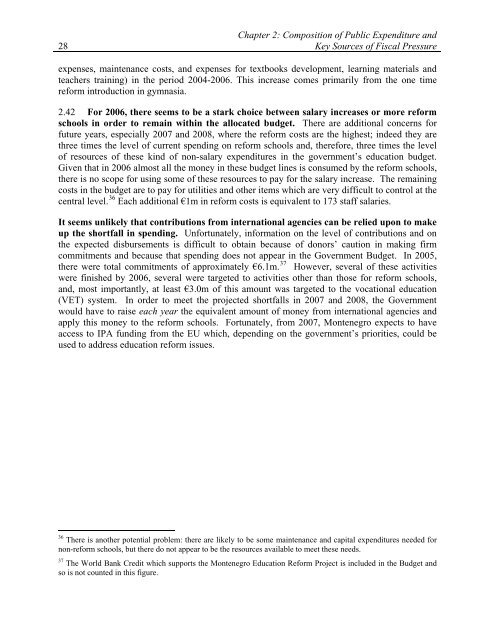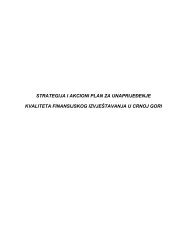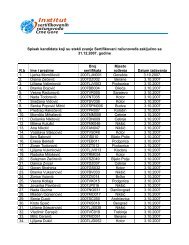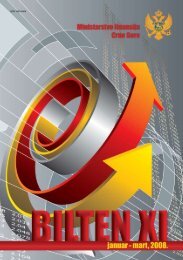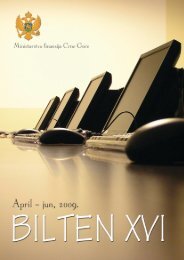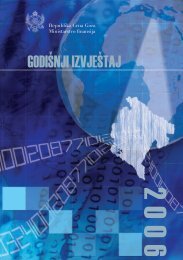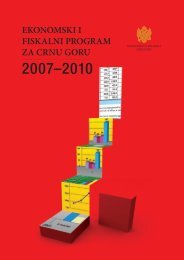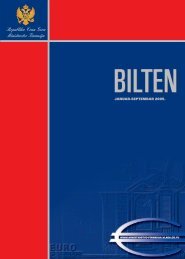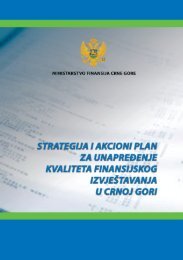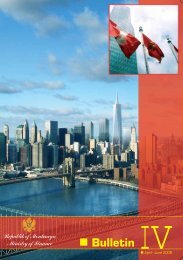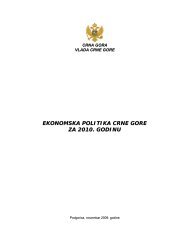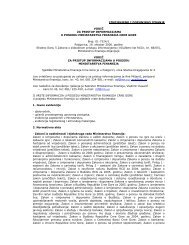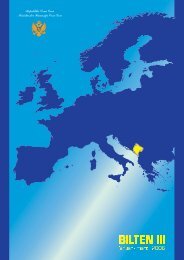Republic of Montenegro: Public Expenditure and ... - Vlada Crne Gore
Republic of Montenegro: Public Expenditure and ... - Vlada Crne Gore
Republic of Montenegro: Public Expenditure and ... - Vlada Crne Gore
You also want an ePaper? Increase the reach of your titles
YUMPU automatically turns print PDFs into web optimized ePapers that Google loves.
28<br />
Chapter 2: Composition <strong>of</strong> <strong>Public</strong> <strong>Expenditure</strong> <strong>and</strong><br />
Key Sources <strong>of</strong> Fiscal Pressure<br />
expenses, maintenance costs, <strong>and</strong> expenses for textbooks development, learning materials <strong>and</strong><br />
teachers training) in the period 2004-2006. This increase comes primarily from the one time<br />
reform introduction in gymnasia.<br />
2.42 For 2006, there seems to be a stark choice between salary increases or more reform<br />
schools in order to remain within the allocated budget. There are additional concerns for<br />
future years, especially 2007 <strong>and</strong> 2008, where the reform costs are the highest; indeed they are<br />
three times the level <strong>of</strong> current spending on reform schools <strong>and</strong>, therefore, three times the level<br />
<strong>of</strong> resources <strong>of</strong> these kind <strong>of</strong> non-salary expenditures in the government’s education budget.<br />
Given that in 2006 almost all the money in these budget lines is consumed by the reform schools,<br />
there is no scope for using some <strong>of</strong> these resources to pay for the salary increase. The remaining<br />
costs in the budget are to pay for utilities <strong>and</strong> other items which are very difficult to control at the<br />
central level. 36 Each additional €1m in reform costs is equivalent to 173 staff salaries.<br />
It seems unlikely that contributions from international agencies can be relied upon to make<br />
up the shortfall in spending. Unfortunately, information on the level <strong>of</strong> contributions <strong>and</strong> on<br />
the expected disbursements is difficult to obtain because <strong>of</strong> donors’ caution in making firm<br />
commitments <strong>and</strong> because that spending does not appear in the Government Budget. In 2005,<br />
there were total commitments <strong>of</strong> approximately €6.1m. 37 However, several <strong>of</strong> these activities<br />
were finished by 2006, several were targeted to activities other than those for reform schools,<br />
<strong>and</strong>, most importantly, at least €3.0m <strong>of</strong> this amount was targeted to the vocational education<br />
(VET) system. In order to meet the projected shortfalls in 2007 <strong>and</strong> 2008, the Government<br />
would have to raise each year the equivalent amount <strong>of</strong> money from international agencies <strong>and</strong><br />
apply this money to the reform schools. Fortunately, from 2007, <strong>Montenegro</strong> expects to have<br />
access to IPA funding from the EU which, depending on the government’s priorities, could be<br />
used to address education reform issues.<br />
36 There is another potential problem: there are likely to be some maintenance <strong>and</strong> capital expenditures needed for<br />
non-reform schools, but there do not appear to be the resources available to meet these needs.<br />
37 The World Bank Credit which supports the <strong>Montenegro</strong> Education Reform Project is included in the Budget <strong>and</strong><br />
so is not counted in this figure.


